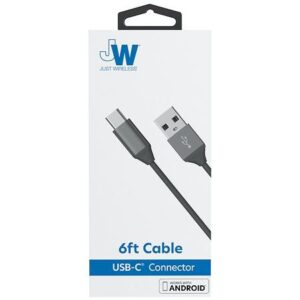Are you wondering whether a Challenger or Charger is faster? Well, the answer might surprise you. While both cars are renowned for their power and performance, it’s essential to delve deeper into their specific features and capabilities to determine which one comes out on top. In this article, we’ll explore the thrilling world of these muscle cars and shed light on whether the Challenger or Charger takes the lead in terms of speed. So, fasten your seatbelts and let’s dive into the exhilarating comparison of the Challenger and Charger to settle the age-old debate once and for all.
Is a Challenger or Charger Faster?
When it comes to high-performance cars, few names evoke as much excitement as the Dodge Challenger and Dodge Charger. Both of these iconic vehicles offer powerful engines and aggressive styling that appeal to car enthusiasts and adrenaline seekers. With their muscular appearances and impressive performance capabilities, many people wonder which one is faster: the Challenger or the Charger?
In this article, we will delve into the detailed performance aspects of the Dodge Challenger and Charger to determine whether one outshines the other in terms of speed. We will explore the engine options, horsepower, acceleration, and other factors that contribute to the overall performance of these vehicles. Let’s dive in!
Engine Options
The engine options available for the Dodge Challenger and Charger play a significant role in their performance capabilities. Let’s take a closer look at the engines you can find under the hood of these powerful cars:
Dodge Challenger Engine Options:
- 3.6-Liter V6: This engine is the standard option for the Challenger and produces 305 horsepower and 268 lb-ft of torque. It delivers a good balance between performance and fuel efficiency.
- 5.7-Liter V8: The 5.7-liter HEMI V8 engine is available on certain Challenger trims. It generates an impressive 375 horsepower and 410 lb-ft of torque, providing a significant boost in power.
- 6.4-Liter V8: Also known as the 392 HEMI V8, this engine offers a whopping 485 horsepower and 475 lb-ft of torque. It delivers exhilarating performance, especially for those seeking a thrilling ride.
- Supercharged 6.2-Liter V8: Found in the top-of-the-line Challenger SRT Hellcat and Hellcat Redeye trims, this supercharged engine takes the performance to an entirely new level. It generates a jaw-dropping 717 to 797 horsepower, depending on the trim.
Dodge Charger Engine Options:
- 3.6-Liter V6: Similar to the Challenger, the Charger also offers a 3.6-liter V6 engine with 292 horsepower and 260 lb-ft of torque. It provides a decent blend of performance and fuel efficiency for daily driving.
- 5.7-Liter V8: The same 5.7-liter HEMI V8 engine found in the Challenger is available for the Charger as well. It generates an impressive 370 horsepower and 395 lb-ft of torque, giving the Charger a noticeable power boost.
- 6.4-Liter V8: The Charger Scat Pack and SRT 392 trims come equipped with a 6.4-liter V8 engine that produces an exhilarating 485 horsepower and 475 lb-ft of torque, comparable to the Challenger’s 6.4-liter engine.
- Supercharged 6.2-Liter V8: The Charger SRT Hellcat and Hellcat Redeye feature the same supercharged engine as their Challenger counterparts. With 717 to 797 horsepower, the Charger Hellcat models offer mind-blowing speed and acceleration.
Horsepower and Torque
One of the key aspects to consider when comparing the speed of the Challenger and Charger is the horsepower and torque they produce. These numbers provide a glimpse into the raw power each vehicle offers. Let’s examine the horsepower and torque figures for both cars:
Challenger Horsepower and Torque:
- 3.6-Liter V6: 305 horsepower and 268 lb-ft of torque
- 5.7-Liter V8: 375 horsepower and 410 lb-ft of torque
- 6.4-Liter V8: 485 horsepower and 475 lb-ft of torque
- Supercharged 6.2-Liter V8: 717 to 797 horsepower
Charger Horsepower and Torque:
- 3.6-Liter V6: 292 horsepower and 260 lb-ft of torque
- 5.7-Liter V8: 370 horsepower and 395 lb-ft of torque
- 6.4-Liter V8: 485 horsepower and 475 lb-ft of torque
- Supercharged 6.2-Liter V8: 717 to 797 horsepower
From the above figures, it becomes evident that the Challenger and Charger offer similar horsepower and torque across their respective engine options. This means that, in terms of power output, there is no clear winner between the two. However, the higher-performance trims equipped with supercharged engines provide a significant power advantage over the non-supercharged options.
Acceleration and Speed
While horsepower and torque figures give a glimpse into the power potential of the Challenger and Charger, acceleration and speed provide a more tangible measure of their performance. Let’s explore the acceleration and speed capabilities of these two iconic cars:
Challenger Acceleration and Speed:
The acceleration and speed capabilities of the Dodge Challenger vary based on the engine options and trims. Here’s a breakdown:
| Engine Option | 0-60 mph (Seconds) | Top Speed (mph) |
|---|---|---|
| 3.6-Liter V6 | 6.2-6.4 | 130-145 |
| 5.7-Liter V8 | 5.1-5.3 | 150-155 |
| 6.4-Liter V8 | 4.0-4.5 | 155-175 |
| Supercharged 6.2-Liter V8 | 3.4-3.8 | 199-203 |
Charger Acceleration and Speed:
Similarly, the Dodge Charger’s acceleration and speed capabilities also vary depending on the engine options and trims:
| Engine Option | 0-60 mph (Seconds) | Top Speed (mph) |
|---|---|---|
| 3.6-Liter V6 | 6.2-6.4 | 130-145 |
| 5.7-Liter V8 | 5.1-5.3 | 150-155 |
| 6.4-Liter V8 | 4.0-4.5 | 155-175 |
| Supercharged 6.2-Liter V8 | 3.4-3.8 | 199-203 |
From the above tables, it’s clear that the acceleration and top speed of the Challenger and Charger are very similar across their respective engine options. The supercharged engines in the higher-performance trims offer the quickest acceleration and higher top speeds, making them the ultimate choice for those seeking sheer speed and exhilaration.
Handling and Driving Experience
While speed and acceleration are crucial factors to consider, the overall driving experience and handling capabilities also play a significant role in determining which car is faster. Both the Challenger and Charger share a similar platform and suspension setup, providing a comfortable and thrilling ride. However, there are some nuances to be aware of:
Challenger:
- The Challenger, being a two-door coupe, offers a more sporty and agile feel on the road.
- Its slightly smaller wheelbase and lighter weight compared to the Charger contribute to enhanced maneuverability and quicker cornering.
- However, the larger size and weight distribution of the Challenger can affect the overall handling, especially at higher speeds.
Charger:
- The Charger, as a four-door sedan, provides a more spacious interior and better practicality for everyday use.
- Its longer wheelbase and additional weight can make it feel more planted and stable on the road.
- However, the increased size and weight can slightly impact the agility and responsiveness compared to the Challenger.
In terms of overall handling, the Challenger’s smaller size and lighter weight give it a slight advantage in terms of agility and maneuverability. However, the Charger’s larger size and enhanced stability make it equally competent on the road. Ultimately, the difference in handling between the two cars is minimal and comes down to personal preference.
The Verdict
After thoroughly examining the performance aspects of the Dodge Challenger and Charger, it’s clear that there isn’t a definitive answer to which one is faster. Both cars offer a range of engine options, similar horsepower and torque figures, and comparable acceleration and top speed capabilities. Whether the Challenger or Charger is faster depends on the specific engine and trim you choose.
If you’re seeking the pinnacle of speed and acceleration, the supercharged engine options available in the top trims of both the Challenger and Charger provide mind-boggling performance. However, even the base engine options are capable of delivering an exhilarating driving experience.
In the end, the choice between the Challenger and Charger should be based on your personal preferences, desired driving experience, and lifestyle needs. Whether you prefer the classic and aggressive styling of the Challenger or the practicality and versatility of the Charger, both cars offer an exciting journey every time you hit the accelerator.
So, if you’re ready to unleash the power and excitement of a high-performance Dodge vehicle, the Challenger and Charger are waiting to deliver an unforgettable driving experience.
Frequently Asked Questions
Which car is faster, the Challenger or the Charger?
Both the Challenger and the Charger are high-performance vehicles, but their speed capabilities vary depending on the specific models and engine options. It is important to note that the Charger is generally considered to be faster in terms of acceleration and top speed than the Challenger.
What are some factors that contribute to the Charger’s faster speed?
The Charger’s faster speed can be attributed to a few key factors. Firstly, the Charger is generally lighter in weight compared to the Challenger, which allows for quicker acceleration. Additionally, the Charger often offers more powerful engine options, including V8 engines, that provide superior horsepower and torque, leading to increased speed.
Are there any Challenger models that can outperform the Charger in terms of speed?
While the Charger typically has an advantage in terms of speed, there are certain Challenger models that can match or even surpass the Charger’s performance. For example, the Challenger Hellcat and Demon models are specifically designed for high-speed performance with exceptionally powerful engines. These models can rival or even outperform some Charger variants in terms of acceleration and top speed.
How does the handling differ between the Challenger and the Charger?
Although both the Challenger and the Charger are known for their speed, their handling characteristics differ due to their design and purpose. The Charger is considered to have better handling due to its shorter wheelbase and more compact dimensions. Its sedan design contributes to improved maneuverability, making it suitable for both straight-line speed and agile cornering. On the other hand, the larger size and longer wheelbase of the Challenger may slightly impact its handling and maneuverability, but it offers a more comfortable ride.
Is speed the only factor to consider when choosing between the Challenger and the Charger?
No, speed is just one aspect to consider when deciding between the Challenger and the Charger. While the Charger may be faster, the Challenger offers a more classic muscle car look and style. Additionally, the Charger provides more passenger and cargo space, making it a practical choice for those who prioritize comfort and versatility. Ultimately, the choice between the two will depend on personal preferences and priorities.
Final Thoughts
In the battle between the Challenger and Charger, speed is a crucial factor. Both cars boast powerful engines and impressive performance, but determining which one is faster requires a closer look. The Challenger offers a range of engine options, including the high-performance Hellcat and Demon variants, making it a force to be reckoned with on the racetrack. On the other hand, the Charger delivers a combination of speed and practicality, with its larger size and four doors. Ultimately, the answer to whether the Challenger or Charger is faster depends on the specific model and engine configuration chosen. However, one thing is for certain – both cars offer exhilarating speed and a thrilling driving experience.



